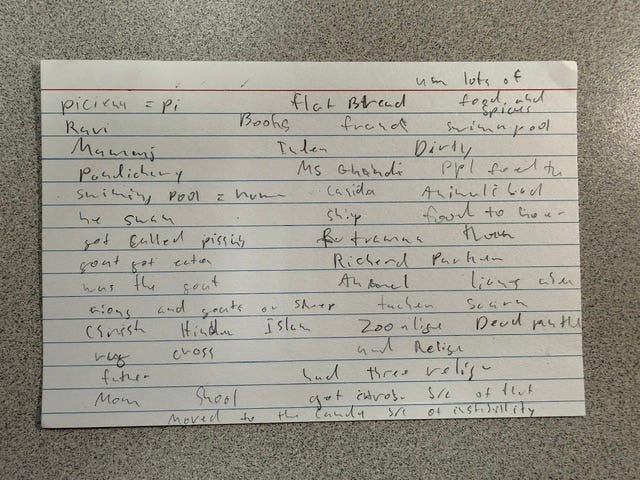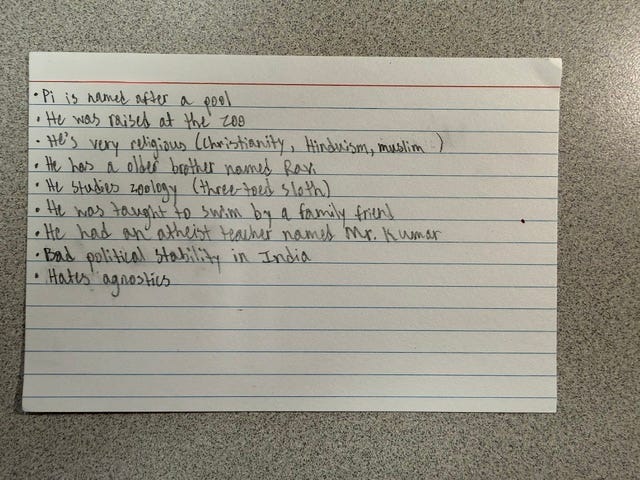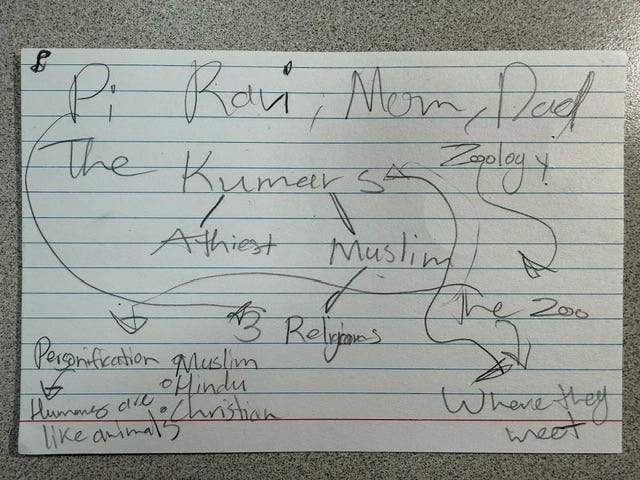What does the science of reading look like in high school (part 3 of many)?
What does the science of reading or structured literacy look like in high school? We get this question a lot…and the truth is, there is no ONE way to answer it, but we can still try. In this series, we will highlight high-impact, replicable instructional practices and routines that are relevant to high school and middle school English/ELA classes.
Today, we are back in Bob Sparks’ 10th grade classroom, where students engage in a quick retrieval routine to recall details from The Life of Pi part one before they engage in deeper character analysis of Pi.
This routine (brain dump, turn & talk, and gist statement) is efficient and short, and it ensures that students have surfaced as many details and evidence as possible before they jump into deeper analysis.
Let’s take a look. First, they complete a brain dump.
In the above clip, I appreciate how Bob clarifies the purpose of brain dumps for his students. This is one of the first times he is using this strategy (inspired by fellow Goyen Literacy fellows), and he builds student buy-in by briefly sharing the purpose. I also note that he allows students to write and/or draw on their notecards, which might promote dual coding. (As an important aside, please read
’s piece on dual coding for background and ideas for doing this work intentionally.)Check out some sample brain dumps below.




Next, students participate in a turn and talk and share what they included in their brain dump.
This is such an important step in the routine because it adds an extra dose of rehearsal. Students are not only re-retrieving the information they wrote or drew, but they’re also explaining it aloud and then hearing their partner’s explanation of related but different details.
Finally, students turn & talk again before composing gist statements about The Life of Pi Part 1:
This final step is also crucial. Creating a gist statement forces students to consolidate and draw connections between what they just retrieved. I appreciate too how Bob builds in another Turn & Talk, which allows students to articulate their thoughts and enhance their own ideas with their partners’, before providing their own summary.


